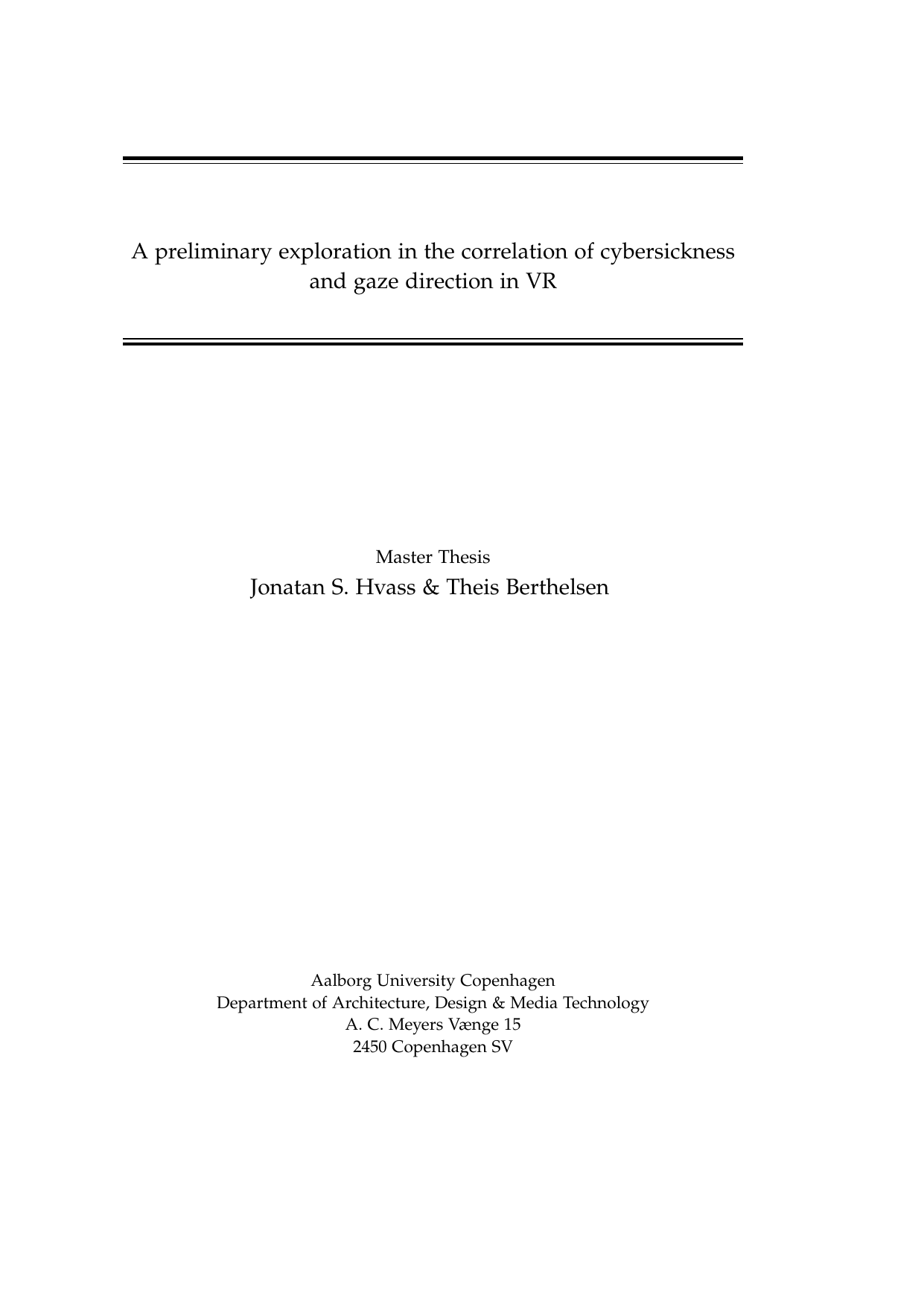
A preliminary exploration in the correlation of cybersickness and gaze direction in VR
Translated title
En indledende udforskning af sammenhæng mellem cybersickness og syns retning i VR
Authors
Term
4. term
Education
Publication year
2018
Submitted on
2018-06-14
Abstract
Virtual Reality(VR) has been on the rise for the last six years with promises of intricate and immersive experiences. However, despite the heavy investments in the technology, some of the basic problems of VR remains unsolved such as cybersickness which is a major problem in VR experiences. In this study the connection between cybersickness and eye movements was explored, in order to enlighten the understanding of the eyes movement and the body’s reaction to VR, with the perspective of a better understanding of cybersickness and the possible solutions to it. The experiment was conducted using within subject design and used a visual stimuli created Unity in which test participants (n=27) would be exposed to three different conditions,Walking in VR using roomscale; moving with gamepad while sitting; moving a gamepad standing. The experiment used an HTC Vive with an added Pupil Lab eye tracker to capture the eye movement and the simulator sickness questionnaire was used as a self-reported measure of cybersickness. Results showed that participants experienced cybersickness in all of the conditions, as well as it was found that the eyes did not move differently between the conditions. This stands in contrast to what would be expected as physically walking should have caused additional movement of the eyes.
Virtual Reality(VR) has been on the rise for the last six years with promises of intricate and immersive experiences. However, despite the heavy investments in the technology, some of the basic problems of VR remains unsolved such as cybersickness which is a major problem in VR experiences. In this study the connection between cybersickness and eye movements was explored, in order to enlighten the understanding of the eyes movement and the body’s reaction to VR, with the perspective of a better understanding of cybersickness and the possible solutions to it. The experiment was conducted using within subject design and used a visual stimuli created Unity in which test participants (n=27) would be exposed to three different conditions,Walking in VR using roomscale; moving with gamepad while sitting; moving a gamepad standing. The experiment used an HTC Vive with an added Pupil Lab eye tracker to capture the eye movement and the simulator sickness questionnaire was used as a self-reported measure of cybersickness. Results showed that participants experienced cybersickness in all of the conditions, as well as it was found that the eyes did not move differently between the conditions. This stands in contrast to what would be expected as physically walking should have caused additional movement of the eyes.
Keywords
Documents
